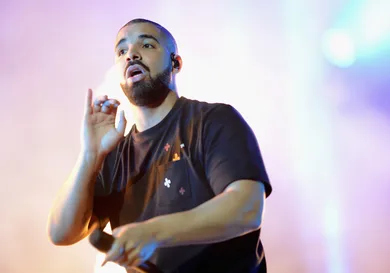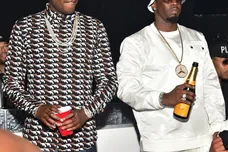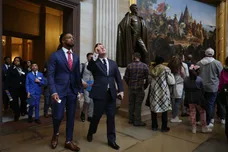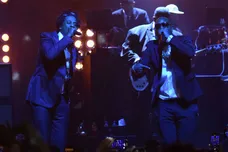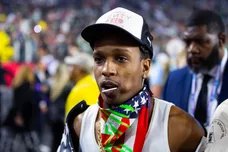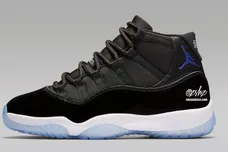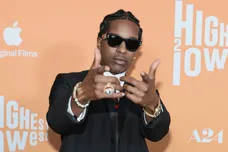This week, Toronto’s CN Tower gleamed a golden hue in the frigid Canadian winter night. The change in color scheme came from an unconventional, but at this point, entirely understandable source: an offhand joke from the city’s biggest superstar, Aubrey “Drake” Graham. After winning the award for Best Rap Song at the 2019 Grammys, the rapper, in a visibly loose, celebratory state, told ET, “I want to say the mayor of Toronto needs to turn the CN Tower gold tomorrow — in chrome and gold tomorrow. Are you stupid? Are you dumb?” When his wish was granted the following night, he cut his cockiness with a tone of sincere honor. “I love my city and this is my real sign of love and recognition,” he wrote on Instagram.
This came just after Drake spoke of what artists should view as acknowledgment in his Grammy speech, discouraging musicians from seeking validation from an awards show that has rarely honored those most deserving, particularly in the world of hip-hop. "If you have people who are singing your songs word for word, if you're a hero in your hometown, if there's people who have regular jobs who are coming out in the rain and the snow, spending hard earned money to buy tickets to come to your shows, you don't need this right here," he said. "You already won."
Denise Truscello/Getty Images
Drake has always found ways to measure his success, and these days, it’s easy to do it with hard numbers. The rapper began this year with confirmation that Scorpion was the biggest streaming album of 2018, and its lead single, “God’s Plan,” the biggest streaming song. It would be easy to rest on being arguably the most popular artist in music, but it seems Drake is looking back to the goals he set at the beginning of his career. As a regular self-mythologizer, it’s not lost on him that his breakthrough project, So Far Gone, turns 10 this week. In fact, he's announced that it will be coming to streaming for the first time this Thursday.
So Far Gone is not Drake’s first mixtape, nor is it his first album, but it is, unquestionably, his true debut. Printed in large type on the cover, the project is presented by October’s Very Own, the partnership founded by Drake and Oliver El-Khatib, both October babies, and is the first time the influence of the collective feels tangible in the music. This is, in part, due to the addition of Noah “40” Shebib, who would later co-found the OVO Sound label, as a guiding hand in the sound of the project. From thereon in, the name Drake meant more than just Aubrey Graham, and marked a decisive move into a lane of his own.
Frazer Harrison/Getty Images
“Lust For Life,” the project’s opening track, lays out the blueprint for Drake’s career for the next decade. Pivoting away from the backpack rap of Comeback Season, it leans into Drizzy’s R&B influences, as 40 presents an insular, heavily-filtered backdrop that sounds like listening to an Aaliyah session through a studio wall. Within the first few minutes of the project, it’s almost as if Drake is already mapping out his legacy. “I'm tryna do it all tonight, I got plans,” he opens in what reads as necessary posturing to shake off his Degrassi image, adding later, “It's funny when you comin’ in first, but you hope that you last.” In reality, Drake was as far from the number one spot as he was from owning the Phantom he parked around the corner from his mom’s house, but his dreams not only of success, but longevity, have exceeded any expectations he could have had.
“40’s mom always say, ‘Don't ask permission, just ask forgiveness,’” Drake says on “The Calm,” the kind of yearbook quote wisdom that he’d pepper throughout his discography. As a teen soap actor turned Lil Wayne protege, Drizzy was a tough pill to swallow for some rap fans, and in some ways, forced him to adopt a “fake it ‘til you make it” mentality before he would fully embrace self-deprecation and own the goofiness of his primetime roots in videos like “Started From The Bottom” and “I’m Upset.” So Far Gone is Drake deciding that the first step to winning people over was to put out great music, whether the world was ready to hear from him or not.
Maybe the most impressive thing about the project is how many bases its able to cover. The opening suite of R&B-informed confessionals tells the story of the demise of a relationship that runs counter to Drake’s ascent to fame, the couple calling things off (by way of a Peter, Bjorn and John remix) before Drizzy gets his call from Wayne. This ushers in Drake’s then-newfound obsession with Houston, the city he first visited when Weezy flew him out to meet. 40 and Boi-1da are able to meld the syrupy crawl of DJ Screw and Bun B with the hazy melodicism of Drake’s bedroom slow jams, a merger that continues to define his music to this day. Then there’s “Best I Ever Had,” an instant pop-rap classic that brought Drake’s songwriting out of murky R&B and into sharp radio ready hook-writing. It’s the kind of crossover hit-making ability that put him in a league of his own with “Hold On, We’re Going Home” and “Hotline Bling.”
Keep in mind, at this point, Lil Wayne is a year removed from Tha Carter III, the platinum-in-a-week blockbuster that solidified his claims of Best Rapper Alive. His presence across So Far Gone also challenges Drake to grow as a rapper, moving out of more winking backpackerisms (“My delivery got me buzzin’ like the pizzaman”) to pure style and confidence when he’s up against his mentor. (“I done became bigger swerving writing in my peer's lane/Same dudes that used to holler my engineer's name/One touch I could make the drapes and the sheers change/And show me the city that I without fear claim”). At a time where very few rappers could measure up to Wayne, Drake proved himself a worthy apprentice.
Kevin Winter/Getty Images
So Far Gone will often be mentioned alongside 808s & Heartbreak as an album that ushered in a more melodic, heart-on-sleeve style of rap. While 808s' direct influence on the project is well-documented (there's a freestyle over "Say You Will," after all), its lasting impact is more tied to R&B. Unlike Kanye, who was looking to T-Pain, Phil Collins and Tears For Fears when making his jump to singing, Drizzy was working with Lloyd, Omarion and Trey Songz on So Far Gone, and the studied R&B leanings of the project helped break ground between rap and its sister genre in a way that’s still being seen today with the likes of The Weeknd, PartyNextDoor, 6lack, and Bryson Tiller.
While Drake’s songwriting has become more refined with time, all of the essential tools he’s used to build one of rap’s longest runs were present in So Far Gone. In that way, it’s one of hip-hop’s great blueprints, and will certainly be something artists continue to reference for years to come. Unfortunately, they don’t have no award for that.
